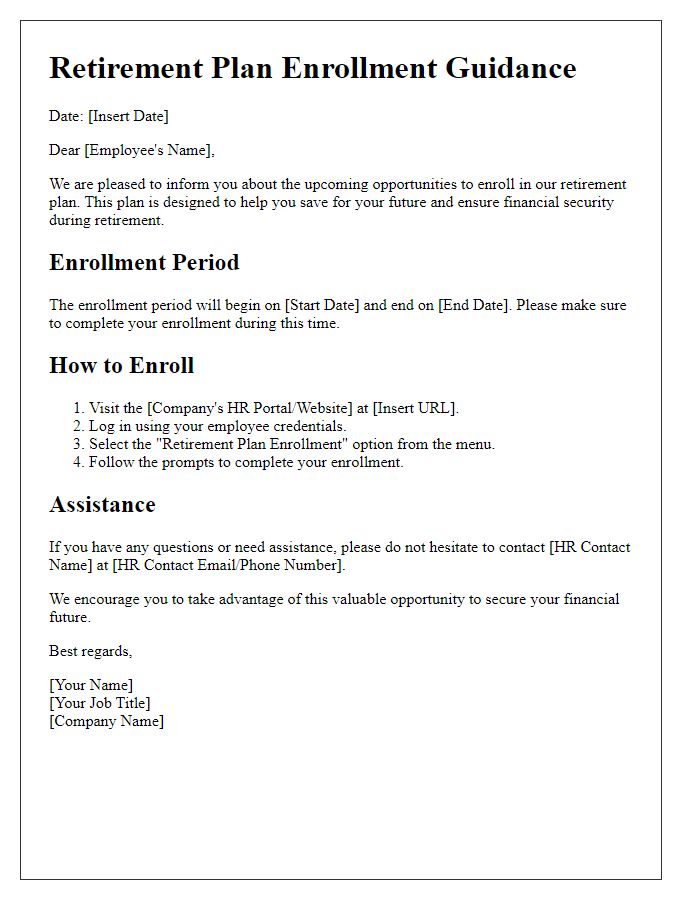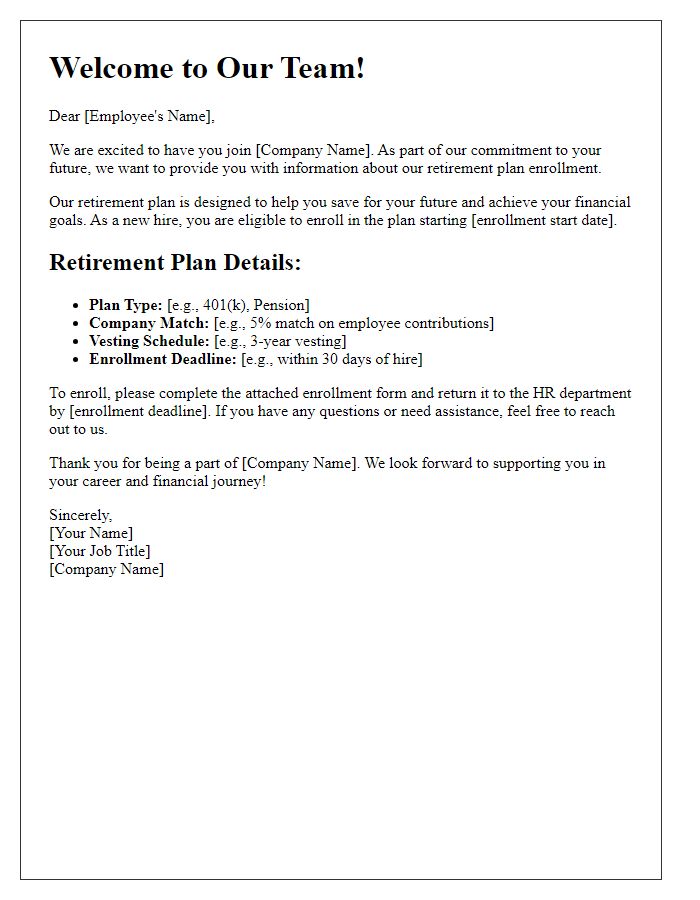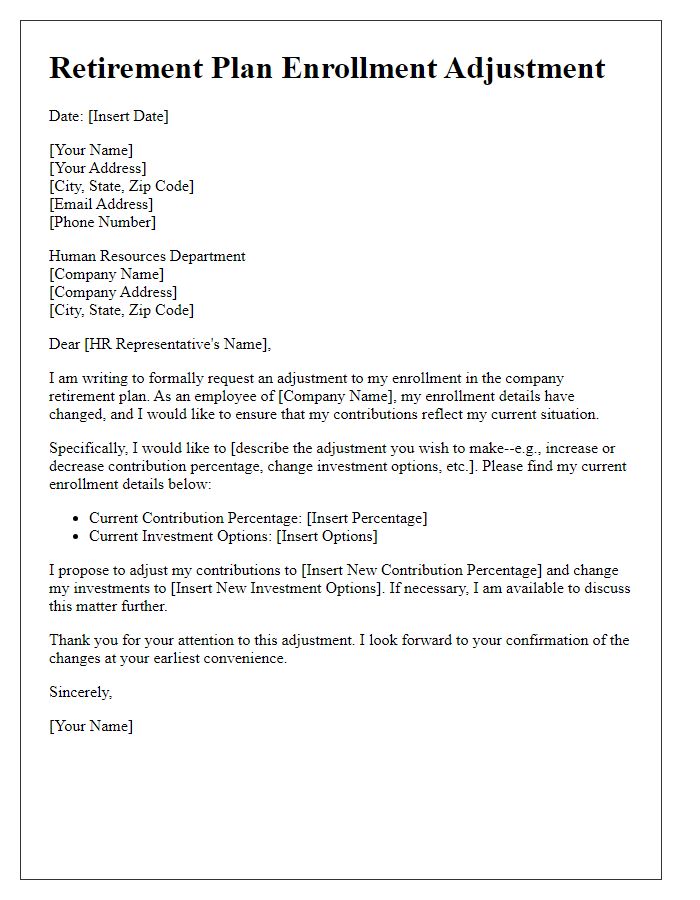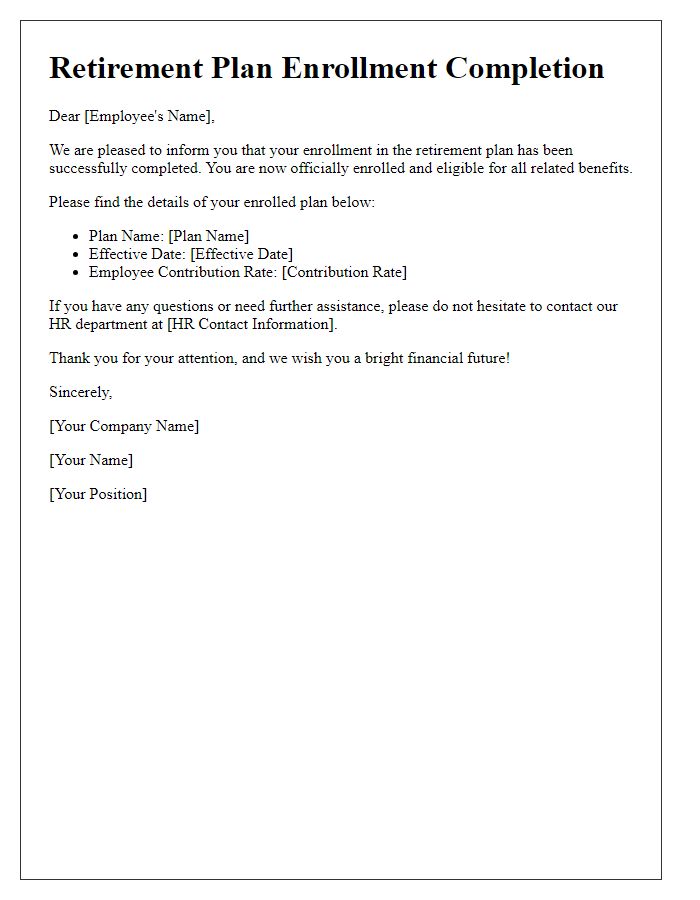Planning for retirement is a significant step towards securing your financial future, and it can be an exciting journey! Whether you're nearing retirement age or just starting to think about your long-term goals, enrolling in a retirement plan is essential for building a safety net. Understanding the various options available to you can empower you to make informed decisions that align with your dreams for the golden years. Ready to discover how to get started with your retirement plan enrollment? Read on!

Personal Information
When enrolling in a retirement plan, it is essential to provide accurate personal information to ensure proper processing. Name serves as the primary identifier in the enrollment form. Date of birth, typically a format of MM/DD/YYYY, is crucial for determining eligibility and retirement age calculations. Social Security Number, unique to each individual, is necessary for tax reporting and benefits tracking. Contact information, including current address and phone number, facilitates communication regarding the plan. Employer details, specifically the company name and employee identification number (if applicable), allow for seamless integration with the company's retirement framework. Finally, selecting the preferred retirement plan type, whether a 401(k) or IRA, is vital for aligning with personal financial goals.
Enrollment Instructions
Enrollment in a retirement plan is a critical step for financial security, especially for employees aged 25 and above. Employers often provide specific instructions on how to enroll in plans like 401(k) or IRA. For example, forms may require personal information, contribution percentages, and beneficiary designations. Deadlines for enrollment can vary widely; many companies set an annual open enrollment period, while others allow continuous enrollment. Participation can significantly impact future savings, as employer matching contributions often enhance the growth potential. Employees should also be aware of investment options available, such as stocks, bonds, or mutual funds, which may influence their decision. Understanding the plan's rules, including vesting schedules and withdrawal restrictions, is essential for making informed choices.
Contribution Details
Retirement plan enrollment involves critical contribution details, such as employee and employer contributions, matched percentages, and maximum limits imposed by tax regulations. Employees typically contribute a percentage of their salary, often ranging from 3% to 15%, into the 401(k) plan based on individual financial goals. Employers may match contributions up to a certain percentage, commonly around 50% on the first 6% contributed. Contribution limits for 2023 set by the IRS are $22,500 for individuals under 50 and $30,000 for those 50 and older, allowing for catch-up contributions. Eligibility factors include age, years of service, and hours worked per week, which can vary by plan. Understanding vested rights and the impact of early withdrawals also plays a vital role in planning for a secure retirement.
Plan Benefits
Retirement plan enrollment provides significant advantages for individuals planning for financial security in their later years. Key features of the plan include tax-deferred growth, allowing contributions to grow without immediate taxation. Additionally, matching contributions from employers, often seen in companies like Google or Amazon, can increase savings potential significantly, sometimes up to 6% of an employee's salary. Access to diverse investment options, including mutual funds, index funds, and ETFs, enables participants to tailor their investment strategies to align with personal risk tolerance and financial goals. Furthermore, the plan often includes financial education resources, empowering participants with knowledge about asset allocation and retirement strategies to enhance their financial literacy. Early enrollment, particularly before the age of 30, can lead to substantial retirement benefits due to compound interest working over time.
Contact Information
Retirement plan enrollment requires accurate contact information to ensure efficient communication throughout the process. Essential details include the employee's full name, social security number, home address, and personal contact numbers. Additionally, employers often request the employee's email address for electronic notifications. This information supports accurate record keeping and facilitates timely updates regarding enrollment status, contribution details, and plan benefits. Using this data, companies can also enhance their employee engagement initiatives related to financial wellbeing. Accurate contact information plays a crucial role in ensuring employees remain informed about their retirement options.













Comments